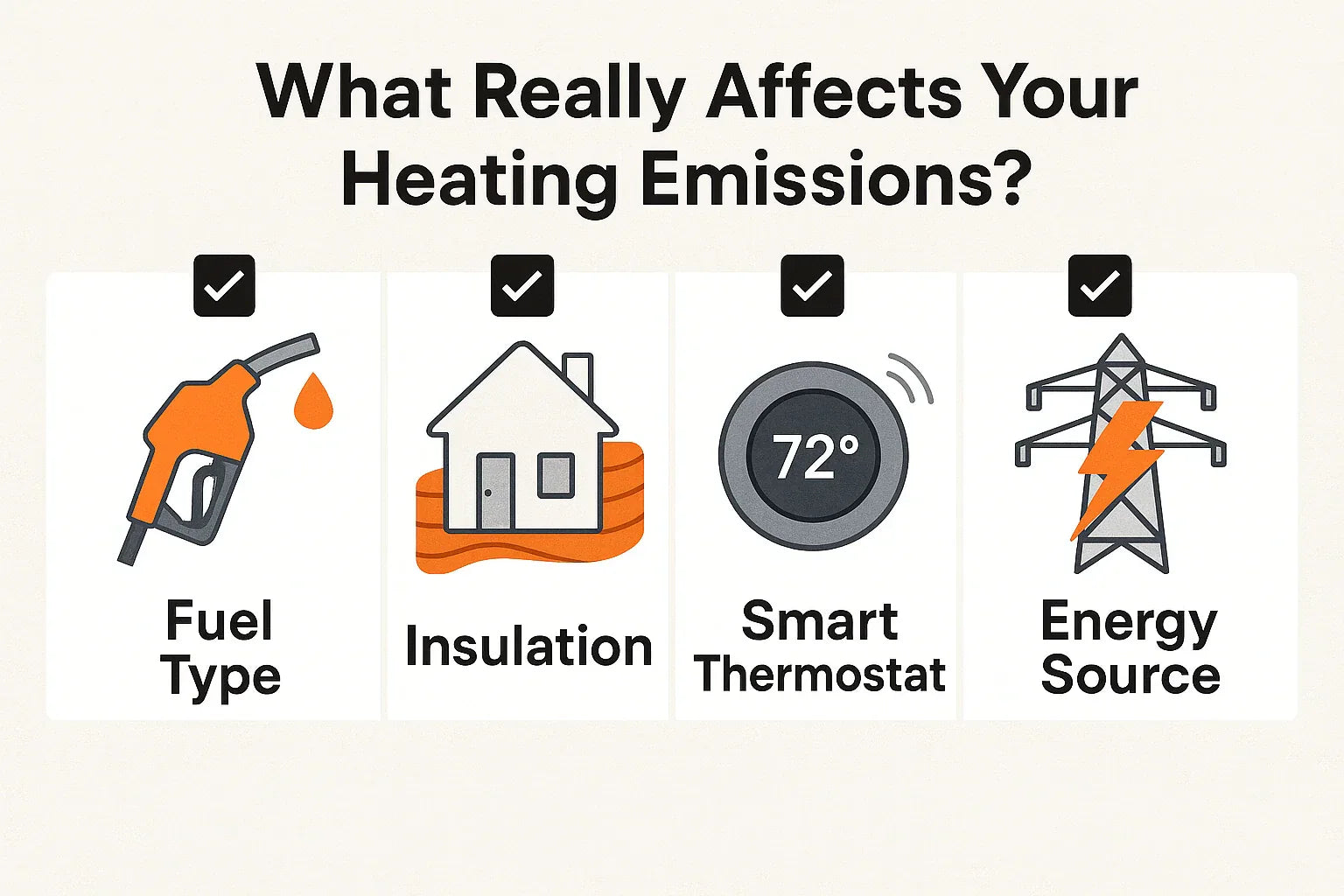When you're choosing a home heating system, cost and comfort usually top the list. But if you care about your environmental impact — or just want to future-proof your home as energy policies shift — it’s worth asking: which system has a lower carbon footprint, gas or electric?
The answer isn’t always black and white. It depends on your local energy mix, your home's insulation and usage patterns, and how the grid is evolving in your area. Let’s break down the real carbon impact of gas and electric heating in 2025 — and what it means for your next upgrade.
Why Carbon Footprint Matters in Home Heating
Your home's heating system is likely the largest single contributor to your household’s carbon emissions. According to the EPA, space heating accounts for over 40% of residential energy use in colder regions — and the majority of that energy either directly or indirectly produces greenhouse gases (GHGs).
What Is a Carbon Footprint?
In simple terms, your carbon footprint refers to the total greenhouse gas emissions generated by your activities. For home heating, that includes:
-
Direct emissions (like burning natural gas or propane)
-
Indirect emissions (like the power plant emissions that come from generating electricity)
Both matter — but they’re measured and influenced differently, which is why comparing gas and electric heating takes a closer look.
Emissions from Gas Furnaces
Combustion Emissions
Natural gas furnaces produce on-site emissions when they burn fuel. For every therm (100,000 BTUs) of natural gas burned, around 11.7 pounds of CO₂ are released into the atmosphere, according to the U.S. Energy Information Administration (EIA).
And it's not just CO₂. There's also methane, a greenhouse gas that's 80+ times more potent than CO₂ over 20 years. Methane leaks during natural gas extraction, transport, and storage — a hidden footprint gas systems carry.
Delivery and Infrastructure
Gas infrastructure is also a factor. Aging pipelines can leak, and the energy used to compress and transport gas adds more emissions. According to the Union of Concerned Scientists, pipeline emissions are an underreported but growing problem in older urban areas.
Regional Variation
In areas where heating oil or propane supplements gas (often in rural or backup setups), the emissions profile worsens — these fuels produce more CO₂ per BTU than natural gas.
Emissions from Electric Furnaces
It Depends on the Grid
Unlike gas, electric furnaces don’t emit anything on-site. But their carbon footprint is tied to how your electricity is generated. If you live in an area where coal dominates the grid, running an electric furnace could indirectly cause more CO₂ emissions than a modern gas system.
Fortunately, that’s changing fast.
The Clean Grid Advantage
In 2025, many countries — including the U.S. and Canada — are rapidly shifting to cleaner electricity sources like wind, solar, and hydro. According to the Global Electricity Review 2025 by Ember, clean electricity reached a record 39% of global power generation in 2024, and fossil fuel generation saw its first decline outside of a global crisis. This trend means electric heating systems become cleaner over time — without you needing to replace a thing.
Side-by-Side Emissions Comparison
So, how do these two heating types stack up?
Let’s look at a simple scenario:
A 1,800 sq. ft. home in a mixed-climate zone like Pennsylvania.
-
Gas Furnace (AFUE 95%): ~4.6 metric tons of CO₂ per year
-
Electric Furnace (100% efficient):
-
In a coal-heavy grid (e.g., Kentucky): ~5.2 metric tons
-
In a clean grid (e.g., Washington State): <0.5 metric tons
-
You can estimate your own household’s heating emissions using the EPA’s Carbon Footprint Calculator, which accounts for your location, utility usage, and energy sources.
💡 Bottom line: Electric wins in areas with clean energy and will outperform gas almost everywhere as the grid decarbonizes.
Beyond CO₂: Other Environmental Impacts
Indoor Air Quality
Gas furnaces burn fuel and may release trace combustion byproducts (like carbon monoxide or nitrogen dioxide) into the home if not properly vented or maintained. Electric systems avoid this entirely.
Extraction and Production Impacts
Natural gas extraction — especially fracking — brings heavy environmental concerns like water contamination and earthquakes. In contrast, wind and solar generation have no ongoing emissions after installation.
End-of-Life and Recycling
While both systems require manufacturing and disposal, electric units often have simpler components and fewer emissions in production.
Choosing the Low-Carbon Option for Your Home
Check Your Grid’s Carbon Intensity
Before switching, visit the EPA’s Power Profiler to see how clean your electricity really is. If you're in a renewable-heavy region, electric makes even more sense.
Consider a Cold Climate Heat Pump
In most climates, a cold-climate heat pump will outperform both traditional electric and gas furnaces in emissions and efficiency. They move heat rather than generate it — using just a fraction of the energy.
Want help choosing the right system for your region and comfort goals? Start with our full guide: Gas vs. Electric Furnaces: Which is Better?
Final Verdict: Which Heating Option Has the Smaller Footprint?
If you're heating with gas today, you're emitting CO₂ every time the furnace kicks on. If you're heating with electricity, your emissions depend on the grid — but that grid is getting cleaner each year.
✅ In coal-heavy regions, gas may still be marginally better — for now.
✅ In most states and provinces, electric is the cleaner option.
✅ Long-term? Electric wins big as we electrify and decarbonize the grid.
Ready to Go Green?
Choosing the right heating system is a long-term investment in both your comfort and the planet. Electric systems, especially paired with renewables and smart thermostats, are where the market — and the climate — is heading.
👉 Curious about other performance tradeoffs between these two systems? Read next: How Power Outages Affect Gas and Electric Furnaces
Alex Lane
Your Home Comfort Advocate







